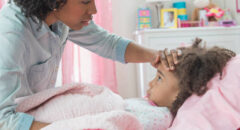
Respiratory syncytial virus (RSV) infections typically overlap with flu season, occurring in the late fall and winter. However, since last year, physicians have been seeing surges start earlier, including during the summer months. This year that trend is continuing as an early spike in cases among young children is pushing some hospitals to capacity.
Children’s hospitals in the Washington, D.C. area, including Children’s National Hospital, Inova Fairfax and Johns Hopkins in Baltimore, are at or near capacity, according to DCist.
Connecticut Children’s Hospital in Hartford has also been pushed to capacity. The hospital’s pediatric in-patient beds have been full for the last few weeks, WTNH reports. With no indication of the spread slowing down, officials have begun seeking the help of the National Guard and FEMA to set up tents in order to expand capacity.
In Texas, doctors at Cook Children’s hospital in Fort Worth told ABC News they are treating around 300 RSV patients a day.
RELATED: Your Young Child Is Sick: Is it COVID or RSV?
Why the spike?
“Last year, more people were wearing face masks and children were more likely to stay home while sick,” Dr. Laura Romano said in Cook Children’s in-house publication.
“This year, parents are sending their children to daycare and school for the first time following two years of the pandemic. … Children who haven’t been previously exposed to respiratory viruses are getting sick,” Romano added.
With winter on the way, are bracing for more cases.
Dr. Russell Migita with Seattle Children’s Hospital told King 5 News they are seeing about 20 to 30 positive cases every day, which according to them, are “unprecedented” figures.
RSV symptoms
Watch closely if your kids appear to have a common cold this fall or winter. It could instead be RSV, and that makes it more likely to








